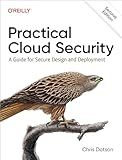Best Security Tools to Buy in December 2025

Cloud Security For Dummies



Practical Cloud Security: A Guide for Secure Design and Deployment



Building and Automating Penetration Testing Labs in the Cloud: Set up cost-effective hacking environments for learning cloud security on AWS, Azure, and GCP



ISC2 CCSP Certified Cloud Security Professional Official Study Guide (Sybex Study Guide)



Hacking and Security: The Comprehensive Guide to Ethical Hacking, Penetration Testing, and Cybersecurity (Rheinwerk Computing)



Securing DevOps: Security in the Cloud



Cloud Security Career Handbook: A beginner's guide to starting and succeeding in Cloud Security


To create a DigitalOcean firewall for PostgreSQL, you can use the DigitalOcean cloud firewall feature to control the incoming and outgoing network traffic to your PostgreSQL database server.
First, log in to your DigitalOcean account and navigate to the Networking section. Then, click on Firewalls and create a new firewall. Give your firewall a name and description, and then add the appropriate inbound and outbound rules to allow traffic to and from your PostgreSQL server.
Make sure to open the necessary ports for PostgreSQL (typically port 5432 for TCP traffic) and restrict access to only the IP addresses or ranges that need to connect to your PostgreSQL server. You can specify individual IP addresses, CIDR ranges, or even other DigitalOcean resources that you want to allow.
Once you have configured your firewall rules, assign the firewall to the droplet or droplets that host your PostgreSQL database server. This will ensure that only the specified traffic is allowed to reach your PostgreSQL server, helping to improve security and protect your data.
How to ensure that only trusted sources can communicate with postgresql on digitalocean through the firewall?
To ensure that only trusted sources can communicate with PostgreSQL on DigitalOcean through the firewall, you can follow these steps:
- Set up a firewall rule to only allow traffic from specific IP addresses or IP ranges that you trust. You can do this by configuring your firewall settings in the DigitalOcean control panel.
- Use a strong password for your PostgreSQL database to prevent unauthorized access.
- Enable SSL encryption to secure the communication between clients and the PostgreSQL server.
- Regularly monitor and review the access logs of your PostgreSQL server to identify any suspicious activity.
- Consider configuring Two-Factor Authentication (2FA) for additional security.
By following these steps, you can restrict access to only trusted sources and enhance the security of your PostgreSQL database on DigitalOcean.
How to whitelist IP addresses in a digitalocean firewall for postgresql?
To whitelist IP addresses in a DigitalOcean firewall for PostgreSQL, you will need to follow these steps:
- Log in to your DigitalOcean account and go to the Networking section.
- Click on the Firewalls tab and create a new firewall or select an existing one that you want to modify.
- In the firewall settings, locate the Inbound Rules section and click on "Add Rule".
- Choose PostgreSQL from the Service dropdown menu.
- In the Source field, enter the IP address or IP range that you want to whitelist. You can also use CIDR notation to specify a range of IP addresses.
- Click on the Add Rule button to save the changes.
- Make sure the Firewall is enabled and the changes are applied.
Now, the specified IP address or range will have access to your PostgreSQL database through the DigitalOcean firewall.
How to prevent security breaches for postgresql on digitalocean by implementing a firewall?
To prevent security breaches for PostgreSQL on DigitalOcean by implementing a firewall, you can follow these steps:
- Use DigitalOcean's cloud firewall feature to create a firewall rule specifically for your PostgreSQL server. You can define which IP addresses or IP ranges are allowed to access the PostgreSQL server.
- Enable encryption for your PostgreSQL server by configuring SSL/TLS settings. This will ensure that all data transmitted between the server and clients is encrypted, making it difficult for attackers to intercept sensitive information.
- Implement strong password policies for database users to prevent unauthorized access. Use complex and unique passwords for each user and regularly update them to enhance security.
- Regularly update your PostgreSQL server and operating system to apply security patches and fixes. This will help protect your server from known vulnerabilities that could be exploited by attackers.
- Monitor your PostgreSQL server logs for any suspicious activity or unauthorized access attempts. Set up alerts to notify you of any potential security breaches and take immediate action to investigate and mitigate the threat.
By following these steps and regularly reviewing and updating your security measures, you can greatly reduce the risk of security breaches for your PostgreSQL server on DigitalOcean.
What is the process for setting up a firewall specifically for postgresql on digitalocean?
To set up a firewall specifically for PostgreSQL on DigitalOcean, you can follow these steps:
- Log in to your DigitalOcean account and go to the Networking section.
- Click on the "Firewalls" tab and then click on the "Create Firewall" button.
- Give your firewall a name and description.
- Under "Inbound Rules," click on "Add Rule" and select "PostgreSQL" from the dropdown list. This will open up port 5432 for connections to your PostgreSQL database.
- You can also add any additional inbound rules as needed, such as allowing SSH connections on port 22.
- Under "Outbound Rules," you can leave the default settings or add any specific outbound rules as needed.
- Click on the "Create Firewall" button to save your settings.
- Once the firewall is created, you can assign it to your Droplets by clicking on the "Add Droplets" button and selecting the Droplets that you want to protect with the firewall.
- Your firewall is now set up and configured to protect your PostgreSQL database on DigitalOcean.
